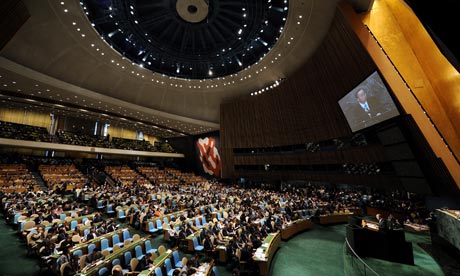Peter Davis, a research fellow in the Overseas Development Institutes's private sector and markets program, recently published an opinion piece in the UK Guardian. His focus is on improving effectiveness of donor aid through engagement of the private sector. Several excerpts are below, the full piece linked here.
The question of aid effectiveness has moved to the centre of development debates. If donors want to make their aid more effective, then they need to engage strategically with the private sector.
We know that development of the private sector is probably the most powerful tool in lifting people out of poverty. As a strategy paper for the Dutch foreign ministry puts it, "the private sector ... is at the heart of the development process. Driven by the quest for profit, they invest in new markets and new facilities that strengthen the foundation of the economy."
Of the countries that have been most successful in emerging from poverty in the past five decades, it is the private sector that has driven the process. For example, a study, carried out by Unctad, the Indian government and the UK's Department for International Development (DfID) found that increases in exports from India between 2003-04 and 2006-07 led to the creation of 26m jobs and to $55bn in additional income. In China too, a recent study found that the private sector not only contributed to economic growth, but also helped the country to cope with the societal impacts of the decline in state industry.
We are also beginning better to understand the mechanisms through which specific industries impact on poverty reduction and development. Take tourism as an example: an Overseas Development Institute-World Bank review identifies three mechanisms...
As the example of tourism illustrates, value chains of international investors are extremely powerful as a tool for broad-based development. According to the Dutch NGO the Centre for Research on Multinational Corporations (Somo), the value chains of international investors "may positively contribute to development in a number of ways ... including economic (economic growth and productivity), social (poverty reduction, employment creation and human rights) and environmental (pollution and environmental destruction) components"...
 |
| Photograph: Str/AFP/Getty Images |
How can donors best harness this energy? Considerable effort has been put into many initiatives over the past decade and a half: yet still private sector development remains peripheral to most donor activity. Where might attention be best focused if we are to develop a more strategic engagement between the donor community and the corporate sector? ODI is exploring a number of possibilities, such as:
• Building on the guiding principles.
• Rethinking the UN Global Compact.
• Engaging the corporate sector at a country level.
• Moving the corporate sector more centrally to the operations of donors.
We need to recognise that donors and companies perform different roles in the development process, and that a more joined-up complementary approach is needed. By engaging more strategically with the corporate sector, donors will be better able to leverage their limited resources, and to demonstrate that their efforts genuinely contribute to pro-poor growth. By collaborating with companies, donors can make aid work.














